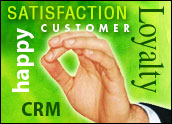
Organizations with the most loyal customers not only measure and monitor employee interactions with customers, but also share that feedback with employees. This creates a closed-feedback loop that allows customer-facing staff members to understand the impact of their interactions on customers, enabling them to improve those interactions over time.
While few organizations make such employee assessments today, more are embracing the practice, as they see the benefits it provides to direct competitors and to best-of-breed benchmarked firms in other industries. The leaders in this best practice have transformed follow-up or transactional surveys from basic quality assurance metrics to employee-specific assessments.
Traditionally, the follow-up survey concerns itself with getting customer feedback regarding a specific transaction or standard service interaction, such as a retail purchase, a customer service call or a billing inquiry. Such surveys are typically used to measure quality levels in aggregate. Often, organizations will cross-tabulate results by the type of service request — or by product or location — to compare and contrast their performance in different areas.
Rules of the Road
However, most organizations are not yet using transactional surveys to assess and improve employee performance. If your organization has yet to do so, you will need to expand your transactional survey process to support this level of feedback. To begin using follow-up surveys for employee assessment, you will need to take these steps:
- Move from random sampling to an attempted census.
- Develop new employee reports.
- Develop new management reports.
- Develop HR guidelines for the use of these employee reports.
- Move from random sampling to an attempted census.
Probability sampling — for example, surveying customers from one out of every five interactions — is fine for measuring the overall service levels you are providing. It is also typical of much transactional research, as it minimizes the number of survey invitations per customer. That said, for most organizations, random sampling just won’t work once you begin cross-tabulating results by employee.
Random sampling won’t provide enough responses per employee for you to be able to review employee performance with a high degree of confidence. As a result, you will need to begin inviting almost every customer to rate each service interaction: In other words, you will need to try to conduct a census. While you will not achieve a true census (99-plus percent participation), you will typically develop the sample size you need for employee assessment.
Although attempting a census, it is best not to annoy customers unnecessarily. Accordingly, you should set up and use touch-management rules so that no individual customer is invited to take this type of survey more than once every 30 to 60 days.
Develop New Employee Reports
With traditional transactional surveys, employees were only infrequently shown high-level reports on customer feedback. Now that this feedback is being used for employee assessments, you need to design a new report format and set up periodic distribution of such reports.
Typically, you should provide employees a standard weekly report that shows their results for the prior week compared against the overall average and compared against other employees at their level (as a group, not as individuals).
For organizations where weekly sample sizes are small, report a rolling average of the rating; four- to eight-week rolling averages work well, with longer averages for smaller weekly sample sizes. Occasionally, senior management will press for daily reports, but your organization will almost never have sufficient sample sizes to warrant daily reporting rather than weekly reporting.
Develop New Management Reports
Management reports need to be defined that list all employee averages for a manager’s direct staff and that provide the verbatim comments made by customers about each staff member.
Often, when an organization begins defining the reports, it discovers a lack of consensus about how to structure and distribute this information: Some managers want to share all the feedback with the affected employees, going so far as emailing them a copy of the results of each completed survey. Other managers want to make it clear to respondents that the feedback is only to be shared with management.
Organizations that share employee feedback broadly have the widest understanding of customer needs, which helps those businesses build long-term customer loyalty. For purposes of mentoring employees, it can be helpful for managers to cherry-pick illustrative comments to make their point.
Develop HR Guidelines for Report Use
The employee-employer relationship is the second most regulated relationship in the United States (after the spousal relationship). With that in mind, it is important that the human resource department be actively involved in the creation of these employee reports.
Certainly, there will be occasions when consistent negative customer feedback will lead to an organization deciding to terminate the employment of specific individuals. That is not the primary purpose or even a goal of this research, however. The customer feedback should be used to mentor employees, not berate and bludgeon them.
Successful employee assessments help employees better understand and empathize with the customer viewpoint, so that employees can serve customers better in the future.
Transforming traditional transactional surveys into powerful employee assessments can be time-consuming, but it is time well spent, as it aligns employee performance ever closer to customer expectations.
Jeffrey Henning is cofounder of Vovici, a provider of enterprise feedback management solutions.














































Customer surveys improve satisfaction and loyalty by identifying the basis of customer behaviors. If favorable employee opinions, attitudes, and beliefs are high, there will in turn be greater customer satisfaction and loyalty. These combined factors will then, in turn, create a positive corporate/brand image and overall improved organizational performance.